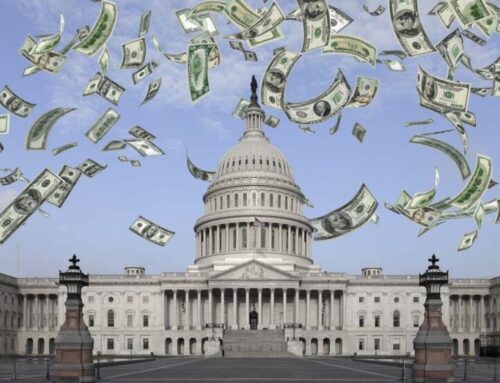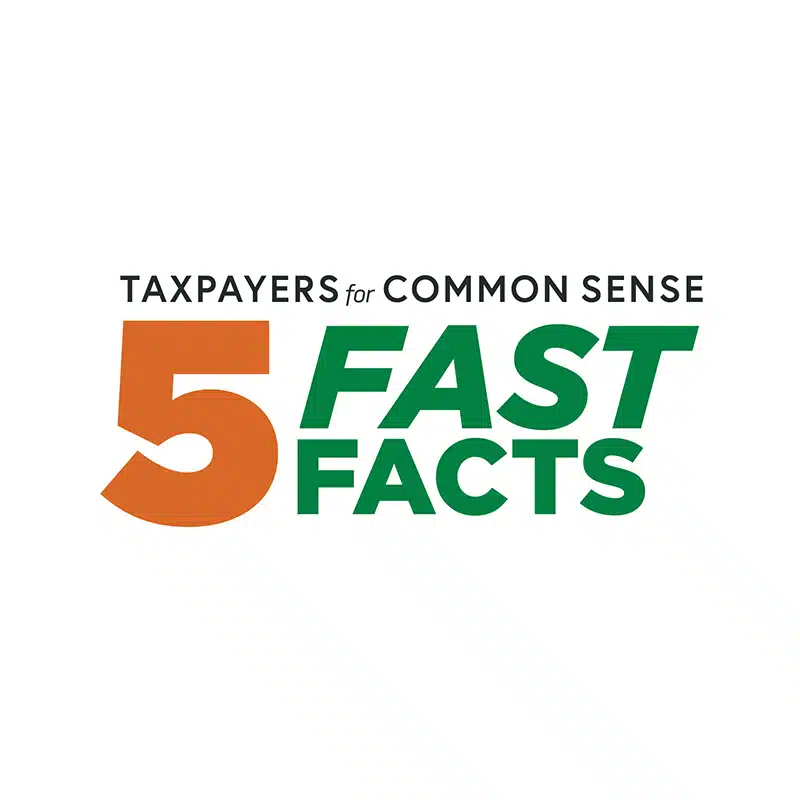View/Download this article in PDF format.
The final agreement signed by the president to avoid the so-called “fiscal cliff” contains several items related to transportation that are of particular importance for the nation’s travelers. These are all from a section of tax benefits that Congress chose to resurrect or extend, despite that all of them were originally intended to be temporary. These provisions are known to latch themselves onto must-pass legislation; last hitching a ride on the deal to extend the Bush tax cuts in 2010.
All told there is more than $70 billion worth of these tax breaks in the broader bill. The real problem with these provisions is that there is never much of a debate to determine if they are the best way to spur the economy or meet other goals.
The following are seven provisions that relate to transportation:
1. Parity for exclusion for employer-provided mass transit and parking benefits
This is a long way of saying that employers may now offer workers $240 per month in a pretax deduction for both parking and transit. Such parity was first achieved in 2009 as part of the stimulus legislation; prior to that, transit benefits maxed out at a level far below parking (most recently $125 per month). The argument in support of this provision is that federal law should not favor one mode of travel over another. To achieve parity, the better solution would be to decrease the benefit (ie. subsidy) for parking instead of raising it for transit. That would have actually saved taxpayer dollars and reduced the deficit. Instead, this provision will cost taxpayers $220 million over the next two years. The additional transit deduction will sunset at the end of 2013.
2. 50% tax credit for certain expenditures for maintaining railroad tracks
This provision is a subsidy for smaller, regional railroads, providing a tax credit for as much as half the cost of qualifying maintenance activities. First enacted in 2004, the purpose of this tax credit is to encourage the rehabilitation – and discourage the abandonment – of these rail lines. This provision will cost taxpayers $331 million in the next two years. The benefit is currently set to expire at the end of 2013.
3. Credit for qualified plug-in electric drive motor vehicles to include electric motorcycles
This credit goes to electric plug-in motorcycles and 3-wheeled vehicles that can be used on a highway (ie. at 45 mph or higher). This credit allows for a tax benefit of 10% of the purchase price, to a maximum of $2,500. Unlike previous iterations of this credit, this version no longer includes non-highway, low speed vehicles (such as golf carts). This credit was actually in an earlier Senate Finance Committee package only to be resurrected in this more narrow form. This provision will cost taxpayers $7 million through 2015, and will sunset at the end of 2013.
In addition, there are a number of fuels-related energy provisions that have a transportation connection as well:
4. Alternative fuel vehicle refueling property
Facilities dispensing certain alternative fuels receive a refueling property credit. This provides a 30% tax break for gasoline stations or other facilities installing biodiesel or 85% ethanol (E85) blender pumps or repowering sites for electric vehicles. Stations dispensing natural gas, liquefied natural gas (LNG), and liquefied petroleum gas (LPG) are also eligible. The credit was first passed in the 2005 energy bill. This provision will cost taxpayers $44 million between now and the end of 2015. The tax credit will sunset at the end of 2013.
5. Incentives for alternative fuel and alternative fuel mixtures
Both the alternative fuel credit and the alternative fuels mixture credit were enacted by the 2005 Highway Bill to provide a tax credit for alternative fuels, which includes high carbon fuels produced from coal, oil shale, and tar sands. Companies that produce unconventional fuels receive a production tax break of 50 cents per gallon; companies that blend traditional fossil fuels with small amounts of high carbon fuels receive the same tax benefit. This credit will cost taxpayers $360 million in the next two years; it will sunset at the end of 2013.
6. Credit for production of cellulosic biofuel
Since passage of the 2008 farm bill, cellulosic ethanol facilities have been able to receive a tax credit of $1.01 for each gallon of biofuel produced before the end of 2012. However, since few facilities are producing this biofuel at commercial scale, the tax credit been largely irrelevant. With various technological and economic challenges facing the industry, analysts predict that production will unlikely meet Renewable Fuel Standard (RFS) volumes set forth in the 2007 energy bill. Cellulosic biofuels are produced from biomass materials like agricultural residues, wood chips, perennial grasses, and municipal solid waste. The fiscal cliff deal will extend the cellulosic biofuel production credit for one year through the end of 2013 at a cost to taxpayers of $59 million.
7. Cellulosic bonus depreciation and inclusion of algae-based fuel plant property
Cellulosic biofuel producers not only benefit from a generous production tax credit, but they also receive special tax treatment through special depreciation rules. Eligible facilities can “expense 50 percent of their eligible capital costs in the first year,” meaning that their tax liability is reduced for the first year of operation. This special depreciation provision was created in the Tax Relief and Health Care Act of 2006. The fiscal cliff package extended this special treatment for cellulosic producers and algae-based biofuels producers through the end of 2013. The total cost of this provision is $500,000, but $1 million in 2013.
For more information, please contact Erich Zimmermann at (202) 546-8500 x132 or erich[at]taxpayer.net.











Get Social